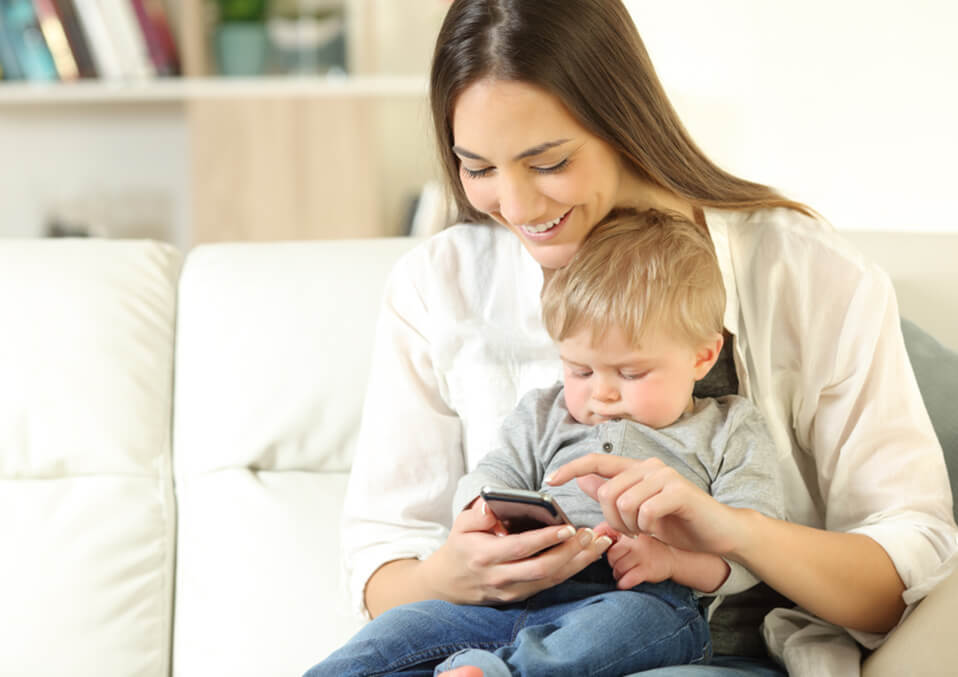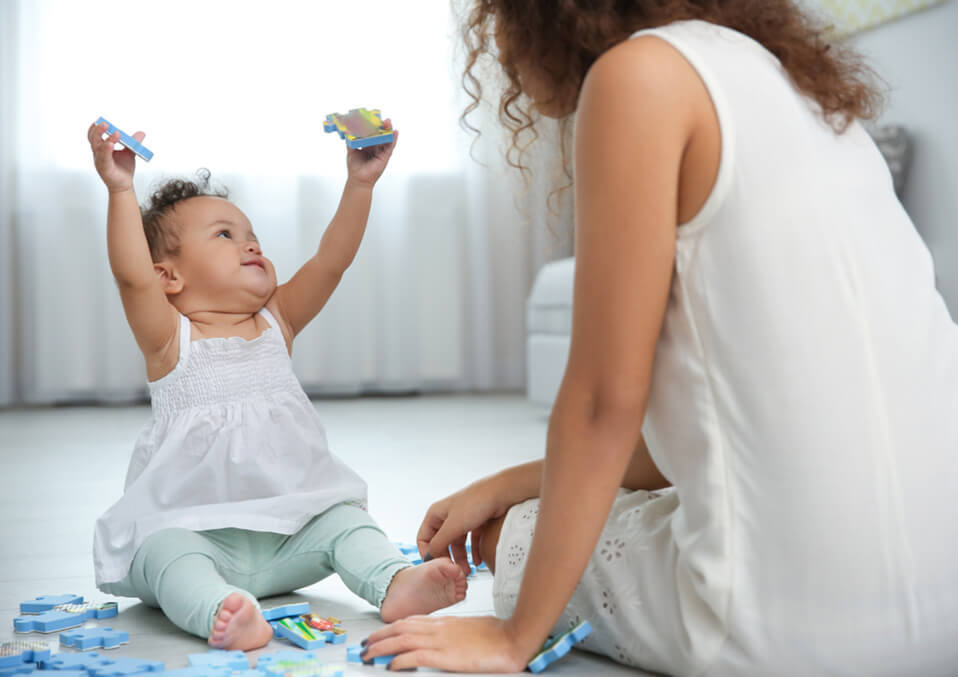You know what’s important to play with your baby: the right kind of games are fun; not just fun and Bondy, but learn how to interact with a wrinkled newborn, and how nice and uncomfortable 14 months of baby training is a unique challenge.
That’s why we came up with this practice guide that covers activities for babies and toddlers from birth to two years old.
Only one thing to keep in mind before reading: babies develop at different rates; so your child is not ready for certain actions, as the child also offers obediently hateful activities.
That’s normal too! Feel free to improvise until I find something that will make you both happy.
0-Months: Swing Time.
 Don’t break the baby’s swing yet. (And definitely stay away from the Playground swing! Until the child has better control of the head, try to fold the sheet in half (double or Royal sheets work better), then place the child on the floor and place the child in the adult’s middle place at each end, lift the bearing end of the sheet until the child is lifted off the ground. “Swing the baby slowly, watching his reaction,” Kimberly runs, med, CMT, tum E Time, the founder of the San Francisco baby prayer and ” child licks in a hammock, while baby loves to sing. If you have any questions, please contact us”
Don’t break the baby’s swing yet. (And definitely stay away from the Playground swing! Until the child has better control of the head, try to fold the sheet in half (double or Royal sheets work better), then place the child on the floor and place the child in the adult’s middle place at each end, lift the bearing end of the sheet until the child is lifted off the ground. “Swing the baby slowly, watching his reaction,” Kimberly runs, med, CMT, tum E Time, the founder of the San Francisco baby prayer and ” child licks in a hammock, while baby loves to sing. If you have any questions, please contact us”
Good to know: this activity will help your child develop strong bones and muscles. Please note that the balance is soft and safe too far from the Elevator seat.
1-Month: Wear Your Baby.
Babies love the touch of skin to skin, but they’re probably too much to just sit and cuddle all day long. Baby carriers such as a slingshot ring or front strap baby carriers will give you a lot of stimulation, with the baby being able to curl up next to the baby, freeing his or her hands. “Using a child, you can see what you see, start making sense of the world using it while working, cleaning and running errands”, ” Bethany gonEcoChic, parents can find products for children.”
This is good to know: a small child should not be carried outside, but inside, to avoid excessive irritation. Make sure the baby has enough space to breathe while loading
2-Months: Make a Mobile.
 “Very young children are fascinated by contrasting colors,” says Gaby Meredith, an artist, writer, and mother of two young children. Then draw some simple shapes with a black marker on white paper and hang them in place on the wall next to the baby’s crib or line of sight.”
“Very young children are fascinated by contrasting colors,” says Gaby Meredith, an artist, writer, and mother of two young children. Then draw some simple shapes with a black marker on white paper and hang them in place on the wall next to the baby’s crib or line of sight.”
This is good to know: at birth, the baby’s vision is limited, so it will be difficult for him to focus more than a few inches from his face-it is vision enhancing the eye, which can show the line of sight of interesting objects. Of course, your favorite “fun items” will come in plenty of time for your child!
3-Months: Put a Twist On Tummy Time.
Babies need time on the face to strengthen the muscles of the back, neck, and abdomen, but many do not like to lie on the floor. So try to put the baby upside down on a football or kickball. “Keep the baby safe and move it back and forth in a circle,” the Lions said. It is also possible to place the toys next to the baby so that the baby can reflect the baby.
If you have any questions, please contact us.
4-Months: Make Some Noise.
At four months, the child begins to tune in to the different sounds that make up the speech, so it is desirable that the conversation was in the center of attention. Kids are probably already making a few different sounds, so you can do quite a lot, Yes, with the words you say and the songs you sing all day, choosing the ones you often say. For example, if a child says “Yes-Yes-Yes-Yes”, then look at a picture of dad and sing a Star Wars song with your best voice”dah dah dahdum”. You can change it and you can use different sounds (Dada, Baba, cha-cha) every day for the baby to listen to different sounds to simulate.
I was happy to know that my copy of my child’s voice was going to give it away. As soon as the child hears your conversation, he or she will start listening to other sounds and combinations of sounds. Before you know it, you’re talking back and forth.
5-Months: Ready For Takeoff
This activity is almost guaranteed and the baby. Bonus: you get foot training in the process. Sit on the floor with your knees bent, start with your legs leaning against the floor in front of you. Put the baby’s tummy on the bottom of the legs, Lie on the ground and put it on the body. The child will float in the air like a plane. Then you say,” you can swing your legs back and forth and move your baby up and down or circle in the air, ” Leo.
What you need to know: a face-down position (and the child’s desire to see your face) can strengthen those core muscles, and he or she can do it.
6-Months: Learn Sign Language.
 Kids are very young and learning sign language actually, it’s the perfect time to start. Parents who use American sign language with their child can only sign for six months (although the child may not start signing until they are more than eight months old).
Kids are very young and learning sign language actually, it’s the perfect time to start. Parents who use American sign language with their child can only sign for six months (although the child may not start signing until they are more than eight months old).
“”Over time, by weaving signs into everyday activities, Your son will also use the sign,” says Moreno, who used sign language with his young daughter. “Using sign language with your child allows them to think and express themselves symbolically before they speak. We were able to teach our daughter more than 350 signs of American sign language when she was 17 months old. When I was 12 months old, he asked me if the truck that was parked next to our car was an airplane.”
It’s good to know: do not know where to start? Many communities offer sign language to the child. There is a regional or online library of books and videos of the child’s sign language.
Read Also:
7-Months: Cause And Effect.
Have you noticed the tendency of a child to throw things out of a high chair? Part of the excitement of this “game” (Yes, it’s a game for him or her, but it can get worse for you)is that within a year from six months, food is thrown to the floor, the child begins to realize that their actions are causing it or he is not responding to them. So why not adjust your own actions to the reaction? “Cut a hole in the plastic lid from the coffee can and give the child a smaller toy,” says Meredith. “Help the child put the toy in the hole in the lid, remove the lid and throw the toy away.”Kikkakunkunya fun is a simple game.
8-Months: Make Musical Instruments.
 Kids love to experiment with different sounds. Just for the whole day, your uncluttered monster will have a day and you will be able to get pots, pans and plastic containers from the Kitchen Cabinet. Show your child a wooden spoon or plastic spatula on his hand and how to score a container. The child will be pleasant(cause and effect, remember? Make some scientific observation (the strongest impact will be a loud noise), and may even show some rhythm. Try playing some music. Some children swing the drum along with the rhythm.
Kids love to experiment with different sounds. Just for the whole day, your uncluttered monster will have a day and you will be able to get pots, pans and plastic containers from the Kitchen Cabinet. Show your child a wooden spoon or plastic spatula on his hand and how to score a container. The child will be pleasant(cause and effect, remember? Make some scientific observation (the strongest impact will be a loud noise), and may even show some rhythm. Try playing some music. Some children swing the drum along with the rhythm.
Good to know: you can also put raw beans or rice in plastic containers of different sizes and make sure the container is tightly closed so the baby doesn’t put things in his mouth for your baby to make different sounds. (Tip: adhesive tape works very well).
9-Months: Play With Dolls.
Or plush.Or plastic food. Important is imagination, toys, stuffed animals, food and other accessories that have long been used to stimulate the simulation game. Jessica Mcmaken, the owner of the consulting company Razbelly Early Childhood, said, “Many children like to swing the dolls, feed them and talk on the phone.
Useful to know: you may feel a little silly playing with dolls, “outdated imaginative play is the foundation of a child’s intellectual development,” McCracken said. ” by participating in a simulation game, the child will develop confidence, practice language skills, and important social skills to solve problems.”
10-Months: Count.
It will take a while for the child to read 123, but that doesn’t mean it’s too early to enter the numbers. So start talking to your son, anything, anything, anything. Consider machines, beads, being direct apples. The important thing is that your child is learning a very important mathematical concept called one-to-one correspondence.
It’s good to know: “every single match is a concept that combines objects and numbers,” explains Laura Laing, author of mathematics for adults. “Children are not born with the idea that the First car corresponds to one, and the fifth car corresponds to five. Usually, the connection for adults automatically, however, is a big problem for young boys.”
11-Months: Do The Laundry.
You may think washing clothes is to blame, but the baby begs in a different way. For some reason, the child will be endlessly attracted to the basket or Laundry basket. So use that interest to your advantage. Bring a large basket of clean clothes. “Let the child stand on the side of the basket and examine the clothes inside,” says former early childhood caregiver Brandi Fisher. Do you want to make even more fun? Try to roll socks and play balls. Or put the baby in a basket with clothes and put it across the room on the floor. You can even play hide and seek with an empty Laundry basket and plenty of clean clothes.
You know that the pull-up will help the baby to strengthen his legs, improve thick motor skills, touch and feel underwear, stimulate tactile sensations of the baby.
12-Months: Put Together a Puzzle
 “Simple wooden puzzles are great for children over the age of 18 and help develop fine motor skills, hand-eye coordination, and spatial perception,” says Moreno.
“Simple wooden puzzles are great for children over the age of 18 and help develop fine motor skills, hand-eye coordination, and spatial perception,” says Moreno.
Good to know: if you don’t want to invest in quality puzzles, check out your local library. Many libraries offer riddles that allow users to solve riddles in the library.
Read Also:
- Why Do Babies Put Everything In Their Mouth?
- How Old Is Too Old To Have a Baby.
- My Baby Doesn’t Look Tike What I Imagined.


